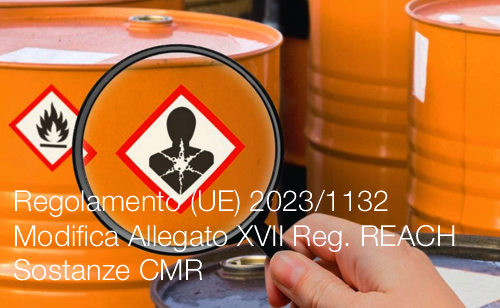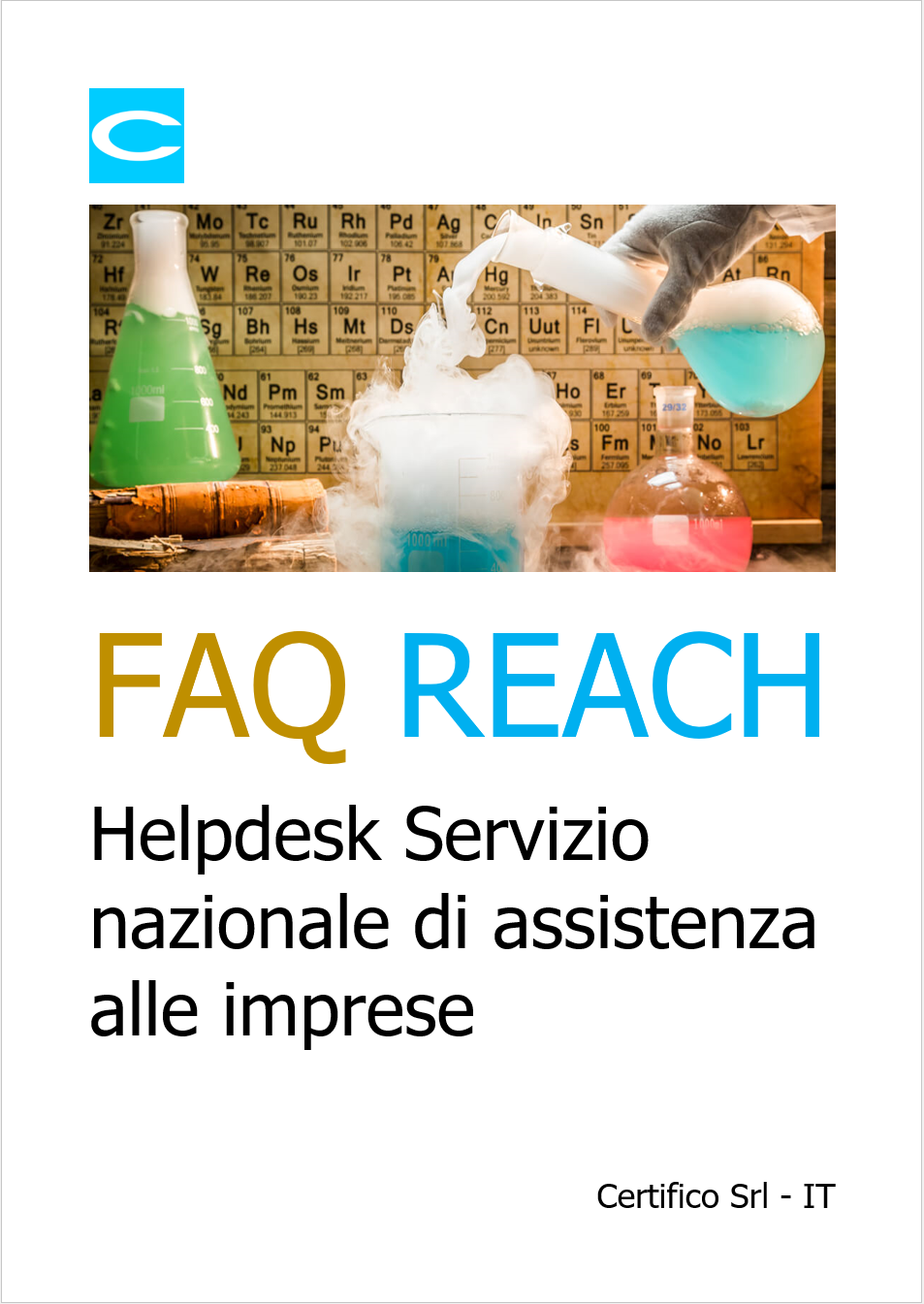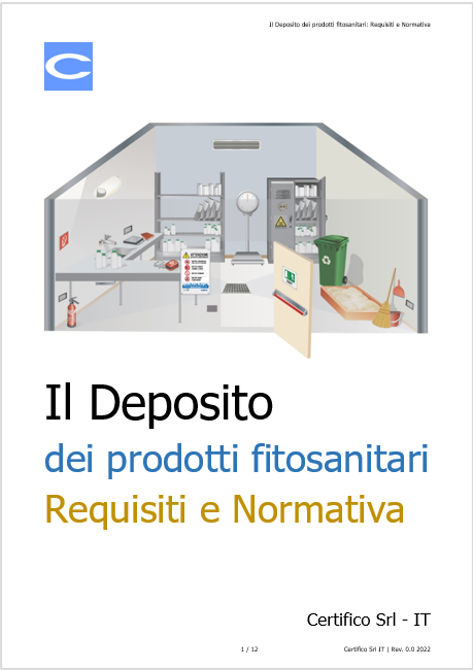Regolamento (UE) 2023/1132

Regolamento (UE) 2023/1132 / Modifica Allegato XVII Reg. REACH Sostanze CMR
ID 19777 | 09.06.2023
Regolamento (UE) 2023/1132 della Commissione dell'8 giugno 2023 recante modifica del regolamento (CE) n...
JRC 2020
Update of Life Cycle Impact Assessment Methods: ecotoxicity freshwater, human toxicity cancer, and non-cancer - Studio
One of the goals of a life cycle assessment (LCA) is to estimate the potential impacts on ecosystems and human health of the manufacturing, use and disposal of products or services due the consumption of natural resources and the emission of substances into air, soil and aquatic environments (ISO, 2006a). LCA methodology, developed in the late 60’s, was focusing mainly on energy flow, use of non-renewable energy and greenhouse gas emissions (GHG). Steadily, new impact categories have been added: i.e. ozone depletion, acidification, eutrophication, resource depletion, freshwater ecotoxicity and human toxicity, land use, etc. (EC-JRC, 2011b, 2011a). Each impact category is relying on models, which link the emissions or resource used (inventory phase) to an impact along a causeeffect chain (impact assessment phase). For the calculation of each impact category, different models are available. A review of the main LCA impact categories can be found in (EC-JRC, 2011b).
Over the years, several models for toxicity-related impact categories have been developed by different research groups: e.g. Caltox (McKone & Enoch, 2002), USES-LCA (Huijbregts et al., 2001; Van Zelm et al., 2009), TRACI (Bare, 2011), IMPACT 2002 + (Jolliet et al., 2003), EDIP 2003 (Hauschild & Potting, 2005), MEEuP (Kemna et al., 2005). These models, based on different assumptions and algorithms lead to different results – up to few orders of magnitude (Hauschild et al., 2008) - preventing a direct comparison between studies.
In order to overcome intrinsic differences of the models and capitalising on the available knowledge, a consensus model – USEtox®- has been developed in the context of the UNEPSETAC (United Nations Environmental Programme – Society of Environmental Toxicology and Chemistry) Life Cycle Initiative (Hauschild et al., 2008; Rosenbaum et al., 2008).
USEtox® aims at assessing the potential impact of substances on aquatic freshwater and human using a multimedia fate modelling to estimate substance distribution in various environmental compartments. USEtox®, in its version 1.01, has been included in the ILCD recommendations (EC-JRC, 2011a), and consequently in the context of the EU Commission Product & Organization Environmental Footprint (PEF/OEF) (EC, 2013a). So far, this model has been considered by the LCA community as the most consensual for comparing the potential impact of substance emissions on human health and aquatic ecosystems (Henderson et al., 2011). This is a tier 1 model that helps identify the 10 - 20 most contributing substances in a life cycle inventory (Rosenbaum, 2015). Once this is done, further data gathering may be needed to confirm the initial outcome of the model.
This initial investigation has led to the publication of three peer-reviewed articles:
- Improving substance information in USEtox®, part 1: Discussion on data and approaches for estimating freshwater ecotoxicity effect factors (Saouter et al., 2017a).
- Improving substance information in USEtox®, part 2: Data for estimating fate and ecosystem exposure factors (Saouter et al., 2017b)
- Estimating Substance Ecotoxicity in EU Ecolabel and in EU Product Environmental Footprint (Saouter et al., 2018)
On June 24th, the ‘Global Guidance for Life Cycle Impact Assessment Indicators and Methods’ (Frischknecht & Jolliet, 2016) brought together approximately 40 experts (including EC-JRC) from all over the world to a 5-day workshop (the Pellston workshop (UNEP - SETAC, 2018)) to address environmental life cycle impact assessment indicators covering among others the following topics:
- Eco-toxicity;
- Human toxicity (including indoor);
The workshop was co-organized by the Life Cycle Initiative (hosted by UN Environment) in collaboration with the Society of Environmental Toxicology and Chemistry (SETAC) aims at providing scientific grounds for harmonized environmental impact indicators, which are suited for use in life cycle assessment studies. The EU Environmental Footprint has built its list of impact assessment categories on the previous work and recommendations of the Life Cycle Initiative and wants that new recommendations from the 2018 Pellston workshop can be reflected in futurs activities, as appropriate.
The key expected outcome of the follow up of the workshop is a set of characterization factors (CFs) representing acidification and eutrophication, freshwater ecotoxicity, human toxicity, natural resources (mineral primary resources), and ecosystem services with focus on soil quality. The news recommendations for the substance toxicity impact categories (both human and aquatic toxicity) require some interventions on the USEtox® model and on how some input factors are derived. Those modifications are expected to be implement in the course of 2019 and new Characterization factors will released then by the USEtox® team.
In summary:
- When the required data were available, all substances registered under REACH and/or present in the EFSA database have been included with a CF.
- Substances not in REACH and EFSA database but in the Pesticide Properties database (PPDB) have been added.
- Substances not in REACH / EFSA / PPDB database but in the original USEtox® 2.1 database have been retained.
- Characterisation factors calculated by USEtox® for cationic metals have been retained.
- Human toxicity cancer effect factors are all from the USEtox® 2.1 database have been retained (the cancer required data to run USEtox® 2.1 are not present in REACH/EFSA/PPDB database).
- Human toxicity cancer and non-cancer CFs are based on the USEtox® 2.1 methodology, but using new input data when possible (i.e from REACH, EFSA, PPDB)
- Freshwater ecotoxicity substance hazard values are based on the 20% effect value derived from Species Sensitivity Distribution (SSD) based on chronic ECx equivalent (Pellston workshop agreement - June 2018).
- Since the outcomes of the Pellston workshop require a significant update of the USEtox® 2.1 model for both freshwater ecotoxicity and human toxicity cancer, non-cancer, the EC will decide if and how to take into account the new version of USEtox® including new CFs, once they become available.
- The freshwater ecotoxicity, human cancer and non-cancer impact categories are recommended to be used in EF context, level of recommendation III.
The report is structured as follow:
- Chapter 2: Description of the three main databases used to retrieve new physicochemical and toxicity data.
- Chapter 3: Selection of the physicochemical data
- Chapter 4: Selection and derivation of the substance freshwater ecotoxicity hazard values
- Chapter 5: Selection and derivation of the substance human toxicity hazard values
- Chapter 6: Calculation of the substance characterisation factors with special consideration regarding organic, inorganic and metal substances as well as for substances reported under a generic names or not yet characterized but being reported in all the EF database. A robustness assessment applied on all CFs is also described.
- Chapter 7: A contribution analysis comparing the CFs used by the EF pilots (from 2013-2018) and the new calculated CFs is presented.
- chapter 8: Derivation of the normalized factors.
...
Fonte: JRC
Collegati:

ID 19777 | 09.06.2023
Regolamento (UE) 2023/1132 della Commissione dell'8 giugno 2023 recante modifica del regolamento (CE) n...

ID 16418 | 18.04.2022 / In allegato documento FAQ completo
Raccolta di tutte le FAQ REACH - Helpdesk Servizio nazionale di assistenza a...

ID 16232 | 26.03.2022 / Documento completo allegato
Il Documento illustra con esempi, i requisiti e le caratteristiche tecniche d...
Testata editoriale iscritta al n. 22/2024 del registro periodici della cancelleria del Tribunale di Perugia in data 19.11.2024